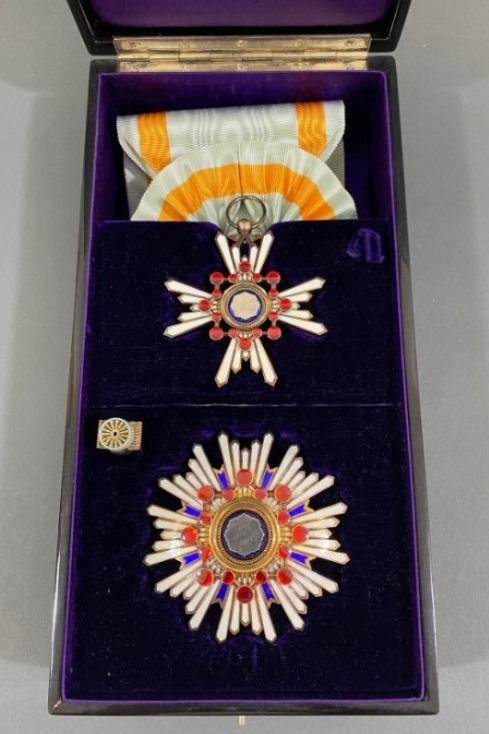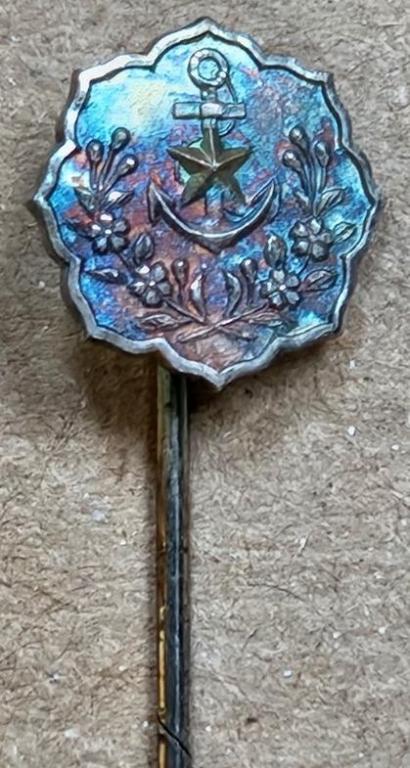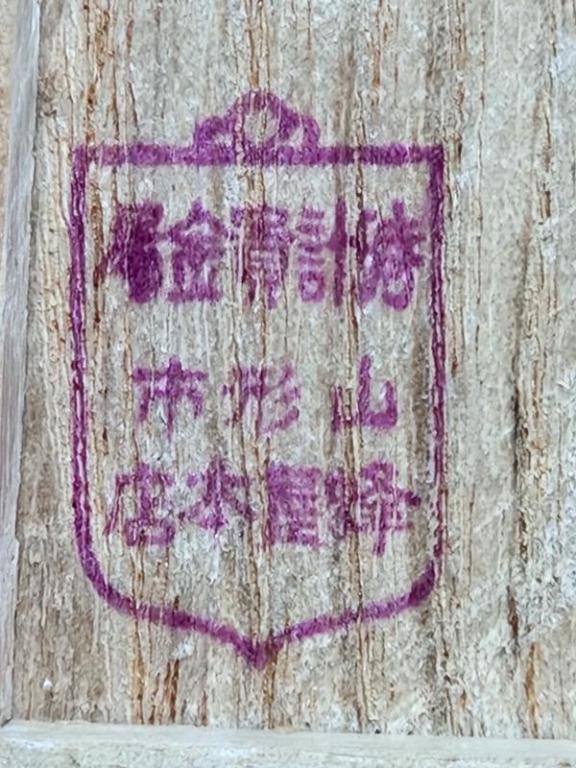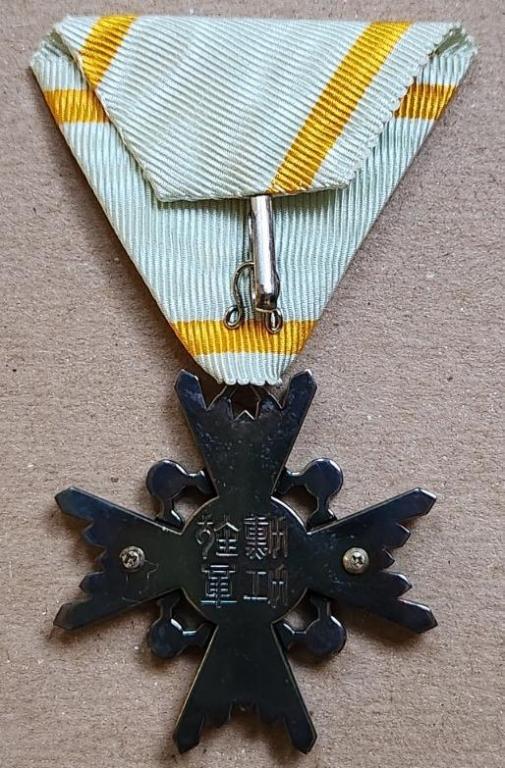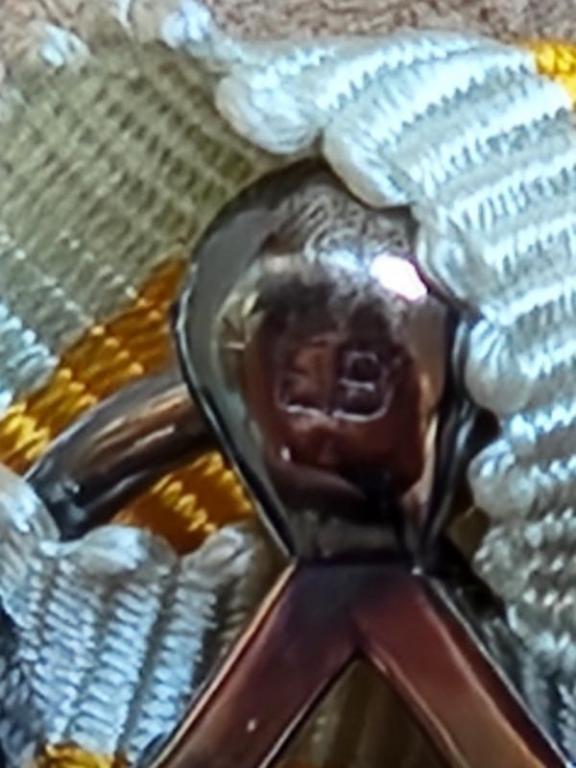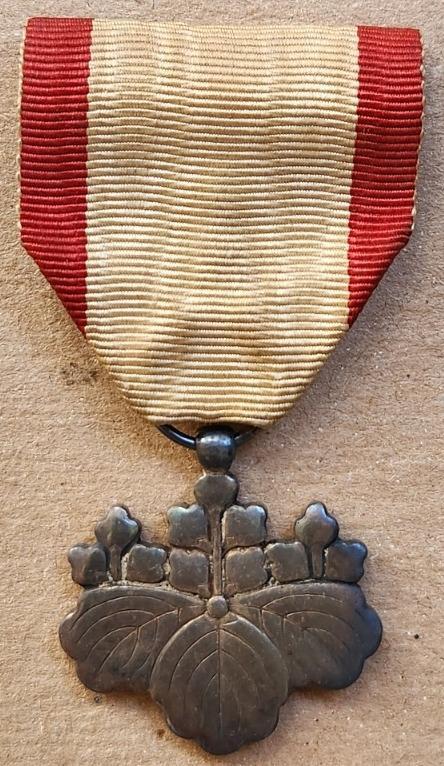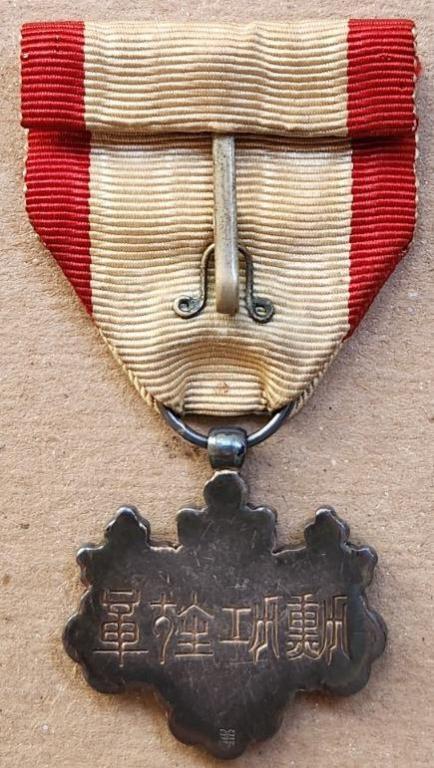-
Posts
468 -
Joined
-
Last visited
-
Days Won
20
Content Type
Profiles
Forums
Blogs
Gallery
Events
Store
Everything posted by TracA
-
Thank you, No One. Much appreciated. Tracy
-
Greetings, It’s been about five months since I’ve added something to my collection of Patriotic Women’s Association badges. Below is my latest addition: neither a membership nor a merit badge, but a commemorative stick pin from the Yamagata Branch. See Medals of Asia at https://asiamedals.info/threads/yamagata-branch-of-womens-patriotic-association-general-meeting-commemorative-badge.26973/. This commemorative is a stick pin, the face of which is 13 mm in diameter. The entire stick pin appears to be silver in color. The obverse displays the typical Patriotic Women’s Association design and the reverse is plain. The stick pin itself is 52 mm long. The stick pin comes in a wooden box that is 72 mm long by 40 mm wide by 16 mm high. On the lid is a three column impressed gold kanji inscription. The the top right is 愛國婦人會 for “Patriotic Women’s Association”; the top left is 山形支部 for “Yamagata Branch”; the central column (center between and below the top right and left columns) is 總會紀念 for “General Meeting Commemorative”. Note that the actual stylization of 紀 on the box lid is in a form that I cannot reproduce. Just like the example on Medals of Asia, my example has a maker’s stamp on the bottom left of the underside of the lid. The ink is purple and the kanji are within a shield shape. The top row is 屋金貴計特 for what I think is “Special Order Jewelers” (I struggled with this translation); the middle row is 市形山 for “Yamagata City”; the third row is 店本屋蜂 for “Hachiya Main Store”. Note that the actual stylization of 計 is in a form that I cannot reproduce. It is a simple addition to my collection, but a nice one. All the best, Tracy Obverse: Box lid: Maker's stamp:
-
Bruce, Nice start. I look forward to your posts about your collection. I know nothing about Japanese swords, but it's great that you have obtained a copper handled 95 with a number in the lower half. It's always great to be able to get something that is not really all that common. All the best, Tracy
-
Thank you, No One. It is indeed. The OST is my favorite. All the best, Tracy
-
Greetings, I have another addition to this thread. While filling some holes in my collection I purchased an Order of the Sacred Treasure 5th Class, cased, with the two phillips head screw reverse (at 9h and 3h). Upon receipt of the medal I was examining it and was delighted to discover a hallmark on the reverse of the ball: EB. Per a thread in GMIC JapanX states that two phillips head reverse Sacred Treasures are dated from 1982/83 to 2003. See On his website, Medals of Asia, he has a single dated entry for the EB hallmark: a Blue Ribbon of Honor dated April 29, 1984. The medal below has a beautiful very, very pale blue ribbon with the yellow stripe. Almost all of the gilding has tarnished off of the medal, the photos of which came out too dark. Finally it was very difficult to photograph the EB hallmark with my cell phone. Enjoy. Tracy Obverse: Reverse: Close-up of the EB hallmark: Case lid:
-
No One, Good point. All the best, Tracy
-
JewittDan, It is a great idea. Sadly I would be a poor contributor. I have very little experience handling and identifying fakes. Unless the item is an obvious fantasy piece, I just don't have the experience. Tracy
-
No One, Thanks. All the best, Tracy
-
No One, What an interesting badge. Any idea what the criteria for eligibility is? Tracy
-
JewittDan, To my knowledge there is no single repository on GMIC for fake Japanese medals and badges. Ditto for the War Relics Forum. Nor is there a single repository on Medals of Asia (to my knowledge), although a user can always search by the word "fake" on Medals of Asia and try to get at the information that way. Tracy
-
No One, Great additions to this interesting Thread. Thanks for sharing. All the best, Tracy
-
Beautiful sword, Bruce. Thanks for sharing. Tracy
- 1 reply
-
2
-
Bruce, Great information. Thanks for posting. I have read Sakai's book a long, long time ago. I should dust it off and read it again. All the best, Tracy
-
Thank you, No One. I especially like the stylized kanji. I find them very aesthetically pleasing. All the best, Tracy
-
Greetings, It’s been a few months since I’ve posted an update in this thread, but the time has come again. A wonderful cased Order of the Rising Sun 8th Class with the 美 (bi) on the reverse at 6h came into my possession a few weeks ago. I already have such a medal, but the case that came with that one was, I’m pretty sure, not the case of issue. That case had silver kanji with the “Showa” stylization of 勲 (kun). I would venture to guess that the case that came with my latest acquisition is the case of issue, as the double row of gold kanji with the “Meiji/Taisho” stylization of 勣 (kun) is much more appropriate temporally for a 美 marked medal. Per Medals of Asia, the 美 mark of the Shobidō workshop was known to be in use from 1900 to 1929 and cases with double rows of gold kanji were known to be in use until sometime in the 1930s. I hope that you enjoy this medal. All the best, Tracy Obverse: Reverse: 美 mark up close: Case lid:
-
(1).thumb.jpg.38cff8cd9c5d55311a4208b0a83448ba.jpg)
My Standard Kaigunto (Navy Sword)
TracA replied to Bruce Pennington's topic in Swords & Edged Weapons
Bruce, What a beautiful sword. Thanks for sharing. All the best, Tracy -
Hello No One, That bank token is interesting. There is no monetary amount specified on it, is there? Tracy
-
Alex, Fascinating. Thank you for posting this. Tracy
-
Hello Marcon, Thank you for the input. Over time I've researched this a bit more and posted the same question on the WRF. Was provided with the name of two companies who sell such storage bags/flips for medals. Unfortunately I can't recall the name of either, and I'm currently on vacation and far away from my reference materials. When I return home I'll post the names of the companies. All the best, Tracy
-
Holy Toledo (as we sometimes say here in the states), 150 pounds sterling! I am sorry, but that really sounds like extortion to me, plain and simple. Tracy
-
Bruce, Great sword. I like it. It might not be pretty now, but it has had a life. I have an OST 5th Class that is quite beat up (heavily soiled ribbon, tarnished medal, damage to the enamel and cabochon) but it is one of my favorite items in my collection because it shows it age. All the best, Tracy
- 1 reply
-
2
-
Greg, I'm sorry that you got burned. Thank you for the warning. We all have to stick together against these scammers. All the best, Tracy
-
Bruce, Wonderful story and journey with your father's sword. Thanks for sharing. All the best, Tracy

